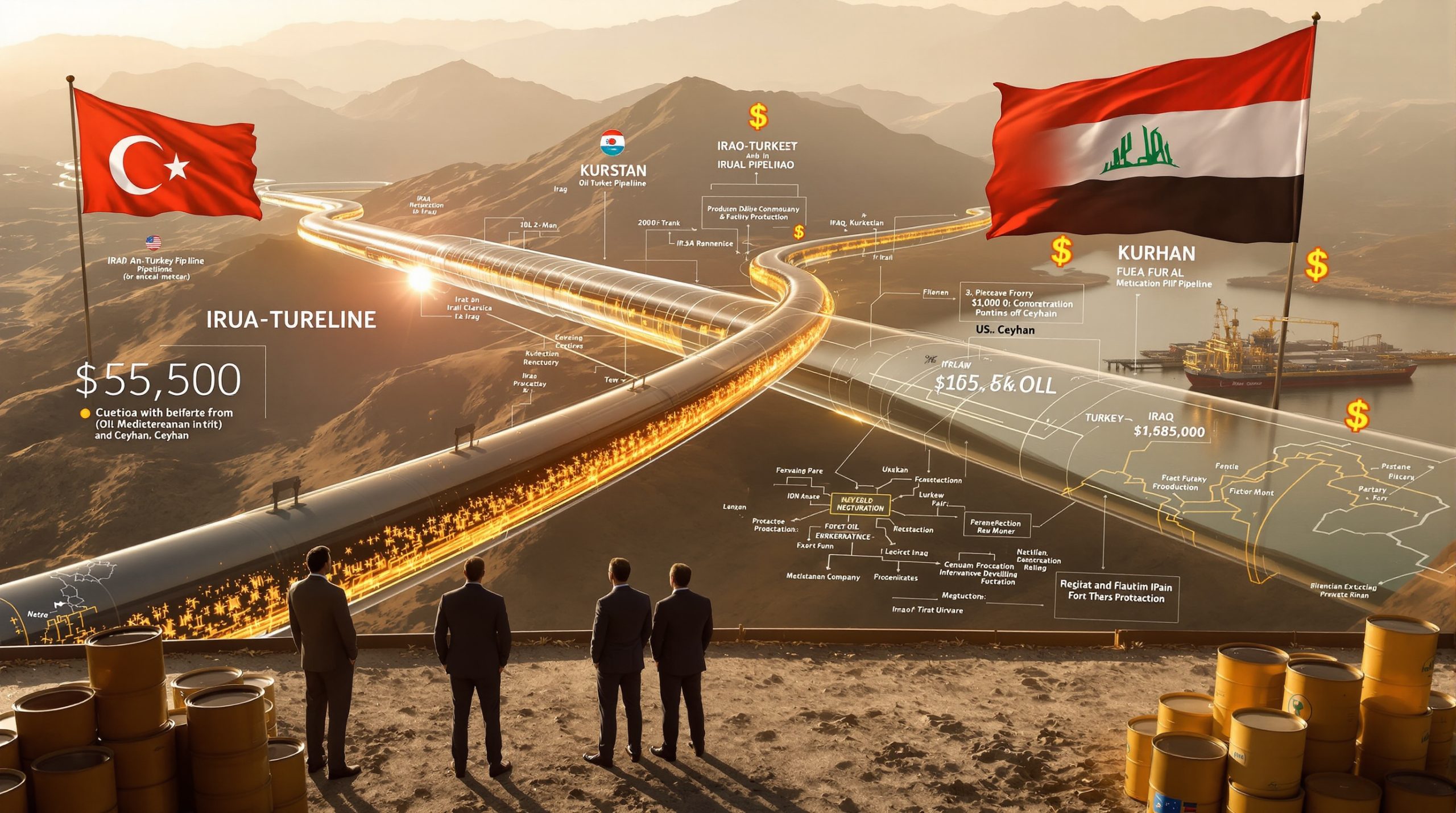Mali's Industrial Gold Production Decline: Understanding the 32% Drop
Mali's industrial gold sector is experiencing a significant downturn in 2025, with production figures falling dramatically and creating ripple effects throughout the country's economy. The decline represents one of the most severe disruptions in the nation's mining history and raises important questions about resource nationalism, investment climate, and the future of gold mining in West Africa.
How Has Mali's Gold Production Changed in 2025?
Mali's gold production has fallen dramatically, with industrial output dropping 32% year-on-year to just 26.2 tons by August 2025. This substantial decrease has placed the country well below the government's projected target of 33.8 tons for the same period, representing a 22.5% shortfall against official forecasts.
The current decline follows a concerning trend that began in 2024, when industrial gold output already fell by 23%. This consecutive year-on-year deterioration signals significant structural challenges within Mali's mining sector.
Key Production Statistics
- Current production: 26.2 tons (as of August 2025)
- Government forecast: 33.8 tons (same period)
- Production shortfall: 22.5% below projections
- Annual projection: 54.7 tons (now considered unattainable)
- Previous year's performance: 23% decline in 2024
Industry analysts note that Mali has typically maintained its position as Africa's third-largest gold producer, but this status is now threatened by the prolonged production slump. The country's mining ministry has not yet announced whether it will revise its annual production target of 54.7 tons, though sources close to the ministry acknowledge this goal is now unrealistic.
What Caused Mali's Gold Production Collapse?
The primary driver behind Mali's industrial gold production decline has been the prolonged suspension of operations at Barrick Gold's Loulo-Gounkoto mining complex. This major mining operation was completely shut down from January to July 2025 amid escalating disputes between the Canadian mining giant and Mali's military government.
The Barrick Gold Dispute
The conflict centered on several contentious issues:
- Implementation of Mali's new mining code, which increased government control
- Disagreements over taxation levels and payment schedules
- Disputes regarding operational control and revenue distribution
- Divergent interpretations of contractual obligations
The Loulo-Gounkoto complex produced 578,000 ounces of gold in 2024 before operations were suspended, representing a substantial portion of Mali's industrial output. The mine has historically been one of Mali's flagship gold operations and a significant contributor to government revenue.
Current Operational Status
While operations at Loulo-Gounkoto technically resumed in July 2025, production remains severely constrained:
- Current production levels hover at approximately 25% of capacity
- Operations are "largely curtailed by lack of access to spare parts"
- Technical challenges have mounted under government administration
- Industry sources estimate at least four months will be required to return to normal production rates
The operational constraints reflect both technical challenges and ongoing tensions between Barrick Gold and Mali's government. While Barrick has removed the Loulo-Gounkoto complex from its own 2025 output forecasts, Mali's mines ministry continues to project the mine will contribute 17.5 tons to national output this year—a figure industry experts consider highly optimistic given current operational realities.
How Has Mali's Mining Regulatory Environment Changed?
Mali's approach to mining regulation has undergone significant transformation in recent years, reflecting broader regional trends toward resource nationalism and greater state control over natural resources.
Resource Nationalism Trend
Mali's government has increasingly emphasized state control and ownership of mining assets, following a pattern observed across several West African nations. This shift has manifested through:
- Implementation of a more stringent mining code favoring state interests
- Higher mandatory government participation in mining projects
- Increased royalty rates and tax obligations
- More aggressive enforcement actions against international mining companies
- Strategic pivot away from Western investors toward Russian interests
The military government that took power in 2020 has accelerated these policies, seeking to maximize state benefits from natural resources in response to public sentiment that foreign companies have historically gained disproportionate benefits from Mali's mineral wealth.
Impact on Investment Climate
The regulatory uncertainties and disputes with major mining companies have created significant challenges for Mali's mining sector:
- Foreign direct investment in exploration has declined substantially
- Operational disruptions have occurred at multiple mining sites
- Relationships with international mining companies have deteriorated
- Technical expertise gaps have emerged as foreign operators reduce presence
- Long-term production capacity is threatened by delayed capital investments
Mining industry observers note that similar resource nationalism trends in neighboring countries have led to mixed results, with some achieving greater state revenues in the short term but experiencing longer-term investment declines that ultimately reduced overall sector performance. These mining consolidation trends have become increasingly common throughout the region as companies attempt to adapt to changing regulatory environments.
Who Are the Major Gold Producers in Mali?
Despite the challenges with Barrick Gold, Mali maintains a diverse portfolio of gold mining operations run by various international companies. The country's gold belt remains attractive for its high-grade deposits and established mining infrastructure.
Active Mining Companies
- B2Gold: Operating the Fekola mine, which has been a stable producer despite regional challenges
- Resolute Mining: Managing the Syama mine with both open-pit and underground operations
- Allied Gold: Running multiple operations following consolidation of assets
- Endeavour Mining: Operating several projects across Mali's gold-rich regions
- Government-controlled operations: Including recently nationalized assets and joint ventures
These companies have maintained operations through Mali's regulatory changes, though many have scaled back expansion plans and exploration activities in response to the uncertain investment climate.
Production Expectations
The Malian government maintains optimistic production projections despite operational challenges:
- Loulo-Gounkoto is expected to contribute 17.5 tons in 2025 according to government estimates
- Barrick has taken a more conservative approach, removing the mine from its 2025 output forecasts
- Other operations are struggling to compensate for the Loulo-Gounkoto production gap
- The total production shortfall has reached 7.6 tons against projections as of August 2025
The divergence between government projections and industry forecasts highlights the tensions between political aspirations and operational realities in Mali's gold sector.
What Are the Economic Implications for Mali?
Gold represents Mali's primary export commodity and a crucial source of foreign exchange. The substantial production decline has significant implications for the national economy and government finances.
National Revenue Impact
The production shortfall creates multi-faceted economic challenges:
- Reduced government revenue from mining royalties and taxes
- Decreased foreign currency earnings affecting import capacity
- Potential budget shortfalls impacting public services and infrastructure development
- Increased economic pressure amid regional political instability
- Reduced ability to service international debt obligations
Mali's economy is heavily dependent on gold exports, with the sector typically accounting for more than 70% of export earnings. The 32% production decline therefore represents a substantial shock to national finances at a time when the country already faces significant economic challenges.
Employment and Local Economy Effects
The mining sector disruptions extend beyond national finances to affect local communities and regional economies:
- Reduced employment opportunities in mining regions
- Decreased local business activity for suppliers and service providers
- Diminished community development programs typically funded by mining companies
- Regional economic instability affecting peripheral businesses
- Potential migration pressures as mining-dependent communities lose income sources
Mining communities have historically developed strong economic dependencies on operational mines, making production disruptions particularly impactful for local socioeconomic stability. Some regions have reported significant business closures and rising unemployment as mining operations have scaled back.
How Does This Compare to Historical Gold Production in Mali?
Mali's gold sector has experienced fluctuations over recent years, but the current decline represents one of the most significant disruptions in the country's mining history.
Production Trends
The country's gold output has followed a concerning trajectory:
- 2023: Relatively stable production before disputes intensified
- 2024: 23% decline as government conflicts with miners escalated
- 2025: Further 32% drop with major mine suspensions
- Historical context: Mali has typically been Africa's third-largest gold producer after Ghana and South Africa
The consecutive years of substantial decline represent an unprecedented downturn for Mali's gold sector, which had previously been characterized by steady growth or modest fluctuations rather than dramatic contractions. This decline comes despite all-time high gold prices in the global market, which would normally stimulate increased production.
Comparative Regional Context
Mali's production challenges occur within a changing West African mining landscape:
- Ghana and Burkina Faso are competing for regional production leadership
- Similar resource nationalism trends have emerged across the region
- Security concerns impact operations in several neighboring countries
- Investment patterns are shifting as companies reassess regional risk profiles
West Africa as a whole remains a globally significant gold-producing region, but the distribution of production and investment is evolving as companies respond to changing regulatory environments and security conditions across different countries.
What Is the Outlook for Mali's Gold Sector?
The immediate future for Mali's gold production appears challenging, though longer-term prospects depend on how current disputes are resolved and whether the government can restore investor confidence.
Short-Term Prospects
Several factors suggest continued difficulties in the near term:
- Ongoing operational constraints at Loulo-Gounkoto
- Limited technical capacity to quickly restore production at compromised sites
- Lingering uncertainty regarding resolution of disputes with international miners
- Potential for further regulatory changes affecting the sector
- Questions about technical expertise to maintain complex operations under government administration
Industry experts generally expect production to remain below historical levels through at least early 2026, with recovery depending largely on whether agreements can be reached with major international mining companies. According to a recent report from Mali's Ministry of Mines, the country's gold reserves have fallen to 731 tonnes, further complicating long-term production outlooks.
Long-Term Considerations
Several factors will determine the long-term trajectory of Mali's gold industry:
- Government approach to foreign investment and partnerships
- Technical and financial capacity to operate nationalized assets
- Global gold market conditions and pricing trends
- Regional security and political stability
- Development of new deposits and expansion of existing operations
Mali maintains substantial undeveloped gold resources, meaning the sector could potentially recover if investment conditions improve. However, developing these resources requires significant capital investment that may be difficult to attract given current uncertainties.
How Are International Mining Companies Responding?
International mining companies operating in Mali have implemented various strategies to navigate the challenging environment, balancing risk management with protection of existing assets.
Strategic Adjustments
Companies have adopted multiple approaches:
- Operational restructuring to adapt to new regulatory requirements
- Strategic engagement with government authorities to resolve disputes
- Reassessment of investment plans and postponement of expansion projects
- Legal actions to protect existing contractual rights
- Diversification of portfolios to reduce country-specific risk exposure
While most international miners have maintained some presence in Mali, many have redirected new investments toward jurisdictions perceived as offering greater regulatory stability and investment protection. The rapid pace of mining industry evolution has created additional pressure for companies to optimize their portfolio allocation strategies.
Investment Decisions
The uncertainty has influenced investment patterns across the sector:
- Delayed capital expenditures on expansion projects
- Cautious approach to new exploration activities despite promising geology
- Focus on maintaining existing operations rather than growth initiatives
- Evaluation of alternative jurisdictions for future investments
- Implementation of more conservative production forecasts
Companies with existing operations in Mali generally remain committed to maintaining these assets but have become notably more cautious about deploying additional capital in the current environment.
What Role Does Artisanal Mining Play in Mali's Gold Sector?
While industrial mining has declined, Mali's artisanal mining sector continues to contribute significantly to overall gold output and provides crucial livelihood opportunities for thousands of Malians.
Complementary Production
Small-scale mining has distinctive characteristics:
- Thousands of small-scale miners operate throughout gold-rich regions
- Less affected by regulatory disputes impacting industrial operations
- Contributing significantly to local economies and rural livelihoods
- Operating with minimal government oversight in many areas
- Often utilizing traditional techniques with limited mechanization
Artisanal mining has historically accounted for approximately 10-15% of Mali's total gold production, though this percentage has likely increased as industrial production has declined. However, the government has recently halted small-scale gold mining operations until the end of September 2025, further complicating the production landscape.
Challenges and Opportunities
The artisanal sector presents both challenges and potential:
- Environmental concerns related to unregulated mining practices, particularly mercury use
- Safety issues and problematic labor conditions requiring attention
- Potential for formalization to increase government revenue through taxation
- Opportunity to maintain some gold production during industrial disruptions
- Traditional knowledge that sometimes identifies deposits overlooked by industrial exploration
Some policy experts suggest that improved integration of artisanal mining into formal economic structures could help stabilize Mali's gold sector during the current industrial production challenges.
FAQ: Mali's Gold Production Decline
Is Mali still considered a major gold producer despite the decline?
Yes, despite the significant drop in production, Mali remains one of Africa's important gold producers. However, its ranking among African gold-producing nations may slip if current production challenges persist. The country still holds substantial gold reserves and maintains the potential to recover production levels if operational and regulatory issues can be resolved.
How has the global gold price affected the situation?
Rising gold prices in 2025 have partially offset the revenue impact of reduced production volumes, providing some financial buffer for both mining companies and the government despite lower output. With rebounding gold prices trading at historically high levels, even reduced production generates substantial revenue, though not enough to fully compensate for the volume decline.
Are other minerals affected by similar disputes in Mali?
While gold represents Mali's primary mineral export, the regulatory approach and resource nationalism trends have created uncertainty across the entire mining sector, potentially affecting future development of other mineral resources. Companies exploring for minerals such as lithium, copper, and iron ore have also reported increased caution regarding investment decisions.
How have local communities been impacted by the mining disputes?
Mining communities have experienced significant disruptions, including reduced employment opportunities, decreased local business activity, and potential reductions in community development programs typically funded by mining companies. Some areas report increased economic hardship as mining-related income sources have diminished or disappeared.
What steps could resolve the current production challenges?
Resolution would likely require negotiated agreements between the government and international mining companies addressing taxation, ownership structures, and operational control while providing investment certainty. Some industry observers suggest that third-party mediation might help facilitate agreements that protect both government interests and investor rights.
Mali Gold Production: Looking Forward
Mali's gold mining industry stands at a critical juncture. While the country possesses substantial geological potential and established mining infrastructure, the current regulatory disputes and operational challenges threaten to undermine long-term production capacity and investment attractiveness.
The government's emphasis on resource nationalism reflects legitimate aspirations for greater national benefit from natural resources. However, successful implementation requires balancing these objectives with the technical expertise and capital that international mining companies can provide. Finding this balance will be crucial to reversing the current production decline and restoring Mali's position as a leading African gold producer.
For mining investors and industry observers, Mali's situation offers important lessons about the complex interplay between resource governance, investment climate, and production outcomes. Whether the country can navigate these challenges while maintaining a viable gold sector will have significant implications not only for Mali's economy but also for gold market trends across West Africa.
Want to Spot the Next Major Mining Discovery Before the Market Does?
Discover significant ASX mining announcements as they happen with Discovery Alert's proprietary Discovery IQ model, turning complex mineral data into actionable investment insights. Explore our dedicated discoveries page to see how major mineral discoveries have generated exceptional returns and start your 30-day free trial today.




